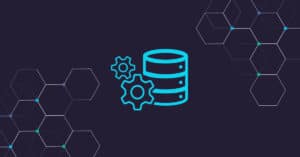Let’s face it. You are stuck with your legacy applications. Unlike, the Delta fraternity house in the movie Animal House, this kind of legacy is not exactly the life of the party. Chances are, yours are probably old, monolithic, single-purpose, expensive to operate, stubborn, and a little more than fragile. Replace? Many careers have been wrecked on these rocks. Truth is, legacy apps are kept around because some critical process depends on them. But that legacy data? We desperately need it for analytics.
“That makes me a legacy. They have to take me. It’s their law.” – Kent “Flounder” Dorfman in Animal House
ETL to the Rescue
Since by definition legacy systems are inflexible, you can’t force these mountains to come to you; you have to go to the mountain.
K3’s data integration, orchestration, and validation platform is a Swiss army knife of connectors, adaptors, and extensions that welcomes legacy applications to the party. The library of K3 connectors enables it to seamlessly get data from legacy systems. For instance, K3 uses a Change Data Capture (CDC) connector to ingest data directly from cumbersome legacy databases. K3’s orchestration enables extracted data sets to be combined in complex and unique ways that allows data to be constructed for analytics. K3’s ETL ensures that no matter how cryptic or dirty the data is, it can be transformed through a low-code interface.
K3’s data integration, orchestration, and validation platform is a Swiss army knife of connectors, adaptors, and extensions. The library of K3 connectors enables legacy systems’ square pegs - whether on-premise or cloud-based - to slide snugly into your other systems’ round-hole interfaces.
Decoding the Process
K3’s low-code solution harnesses the power and advantages of ETL over ELT, or extract, load, transform workflows. When dealing with legacy systems, in particular, the T is the key. It is a keystone in getting data from one place to another. As such, it makes sense to put the T in the middle of the process. K3 ETL grabs data from whatever source it’s coming from, in-house, external, siloed, etc. This data could be structured, saved, and formatted in any number of ways, or it could come in completely unstructured. Makes no difference! K3 data prep collects it all, whips it into shape, and converts it to the precise structure each downstream component needs in order to perform its function.
K3’s low-code solution gives business users critical input into problem-solving and decision-making. The people closest to the business needs and objectives, as well as those most responsible for seeing them achieved, gain the insights they need to keep the enterprise resilient and moving forward.
Let us show you how it works. Schedule a demo.
Read More about Legacy Integration

What Is Data Warehouse ETL?
Data Warehouse ETL is a series of processes: Extract data from across an organization; Transform data for consumption; Load data to a relational or non-relational

Data Orchestration for SaaS and Legacy Applications
We’ve written before about the rise of data orchestration, the process by which enterprises connect disparate data sources so information flows to a central repository

Three Things to Consider When Integrating with Legacy Systems
Three Things to Consider When Integrating with Legacy Systems It used to really bother me. These old cruddy systems. Grey hair after grey hair… they just



